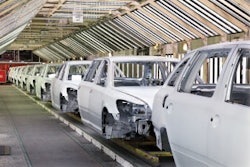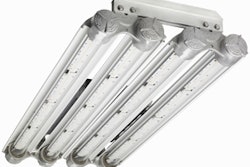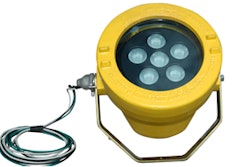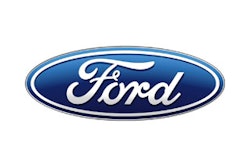Over the past two decades, supply chain software solutions have become mainstream in food manufacturing operations because of the return on investment (ROI) they provided: they saved time, they saved money and they increased efficiencies. Today, we’re seeing a strong growth in web-based food safety and quality assurance (FSQA) solutions because of the same ROI: they save time, they can reduce the cost of goods made, and they create compliance efficiencies at all points — and for all participants — in the food manufacturing process.
There are two main categories of emerging FSQA technologies. One is track and trace — which focuses primarily on reaction — the ability to quickly trace ingredients and finished goods when a problem has been detected after the product has “left the building,” and must be withdrawn or recalled. The second is food safety chain management, which focuses primarily on prevention — helping to prevent non-compliant materials and ingredients from coming in — and non-compliant finished goods from going out to prevent withdrawals, rejections and recalls before they happen.
This article will focus on food safety chain management, the key concepts of which center around the ability to automate online:
- Task scheduling and prompting to review standard operating procedures (SOP), hazard analysis and critical control point (HACCP) program monitoring, and other tasks.
- FSQA test result and data collection — from an unlimited global supplier network — in real time.
- Real-time analysis of all results against regulatory, non-regulatory and customer-driven specs and requirements.
- Real-time generation of certificates of analysis (COA) when results pass — or the automatic issuance of alerts to trigger corrective actions where required.
- Time and date stamping of all records and documentation.
- Performance trending against key performance indicators from a central repository of FSQA data.
Let’s look now at some “today and tomorrow” sample scenarios — by role — to demonstrate how food safety chain management streamlines the manufacturing process for better compliance and ROI.

Scenario 1 — Shipping & Receiving Manager:
It’s 5 a.m. at a food manufacturing plant that manufactures and sells retail cooked chicken in barbeque sauce. The receiving dock is waiting for a last-minute shipment of the sauce required for today’s production startup, which is scheduled to begin at 6 a.m. When the shipping and receiving manager arrives at the loading dock, the driver does not have a COA.
With today's manual process:
- Without the COA, the shipping and receiving manager is unable to verify safety and quality attributes including pH, viscosity and microbiological analysis.
- He reaches the QA manager at home, who tells him not to unload the sauce without the COA.
- The purchasing department is called, but they aren’t in yet, and the shipping and receiving manager gets voicemail.
- The QA manager arrives onsite and cannot reach the sauce vendor; the 6 a.m. start-up time comes and goes.
- The line is on hold, labor is idle and the customer shipment will be delayed — all of which have an associated cost that will not be recovered and ultimately add a financial penalty to the bottom line.
With food safety chain management:
- The COA would have been submitted electronically — by the supplier — prior to the truck leaving for the plant.
- The plant’s food safety chain management solution would have analyzed the COA against specifications in real-time.
- If the specs were compliant, an alert would have gone to the supplier to release the shipment and to the shipping and receiving manager to accept the shipment upon arrival.
- If the ingredient attributes were non-compliant, a corrective action could have been taken at the supplier site or upon arrival (fixing viscosity, for example) — perhaps resulting in a supplier credit.
- In either case — all documentations and verifications are done in real time, production can stay on or very close to schedule and product is shipped to customers on time.
Scenario 2 — Production Supervisor:
It’s 9 a.m. at a candy manufacturing facility — two hours since start-up. The workforce crew is on-station, equipment is running properly and 1,500 boxes have been produced — meeting production standards for output — when the production supervisor is paged by the QA manager. He learns that the daily SOP to test or calibrate the line’s metal detector wasn’t completed prior to start-time due to the absence of a QA technician.
With today’s manual processes:
- Because the metal detector is a HACCP critical control point, an alternate QA technician tests the metal detector, which is shown to be out of calibration.
- Not only does continuing production come to a halt, but the 1,500 boxes are put on hold to be re-run through a properly calibrated detector — all boxes will now have to be opened, and each candy bar will have to go through an off-line functioning calibrated metal detector, be re-boxed and re-labeled.
- Not only will this slow throughput to the distributor or customer, but the extra labor, replacement boxes and re-labeling costs increase the cost of goods made — therefore negatively impacting the production process bottom line.
With food safety chain management:
- Safety chain management solutions often provide the ability to schedule SOPs and other tasks, and events associated with the manufacturing process with automatic prompts to the technician to complete the task. If the task is not completed and entered into the system on time, an alert is sent to the appropriate person(s) so that production doesn’t start until the task is completed.
- If the task was completed and a corrective action was taken — such as re-calibration — that will also be time and date stamped and documented.
- In this scenario production doesn’t come to a halt, there is no labor or cost associated with re-work and the cost of goods made is kept within cost standards.
Please tune into Friday’s Chem.Insider Daily for part two of this two-part piece. For more information, please contact Levin at [email protected], Bernkopf at [email protected] or visit www.safetychain.com.






















